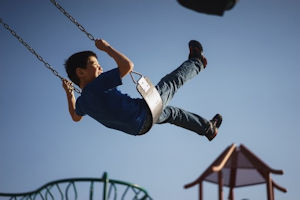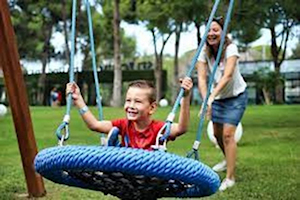Sensory Needs

We use our sensory system for everything from knowing where our body is in space, controlling our movements and balancing, to knowing if we are hungry, hot, tired, thirsty or even emotional.
Are you someone that loves spicy food or loves rollercoasters? Or do you find these sensations unpleasant, and you avoid them?
Maybe you are someone that prefers a light on when you sleep, or someone who prefers the room to be completely dark?
Perhaps you like to listen to music when you are working or cooking, or do you prefer the room to be silent?
Everyone is different. We all process information differently and have different sensory preferences.
We have made the video below to introduce the topic of sensory needs and explain how you can support your child sensory needs. It has been made by the social communication team, so some of the advice or ideas may be more suitable for younger children, but the general principles apply to all children.
You can click here to read a written transcript of this video.
Click on the buttons below to find out more about your child’s sensory world and how you can support them.

Key points to remember
- It is important we don’t expect children to ‘get used to’ sensory input they find uncomfortable but try to find alternate means or make adaptations to the activity to accommodate these differences.
- Be a detective!!!!
- What aspect of the activity is your child finding difficult?
- What are the sensory aspects of the activity? (consider all 8 sensory systems)
- What are your child’s sensory preferences?
- What else is happening in the environment at the time?
- What have you tried? What has worked?
- Try to involve the young person in problem solving.
Ask yourself, are there any smells or sounds you haven’t noticed? How does it feel on their skin? Are there better times of day? Is there a more ‘sensory friendly’ environment you could try the activity in?
A sensory friendly environment is one that meets your child’s sensory needs. This could mean:
- Dimmed lights / blinds or curtains if they don’t light bright lights.
- Reducing clutter / visual distractions if they have low thresholds to visual input.
- Lots of soft textures or cuddly toys to curl up in if they enjoy tactile sensations.
- Heavy blankets if they like the feeling of being ‘squashed’ and have high thresholds to proprioceptive input.
- Rocking chairs or stools if they have high thresholds to vestibular input.
- Certain smells can be calming such as lavender or camomile, your child might like to explore and find out which ones work for them.
- Children may struggle with sensory differences more when experiencing other stressors in their life such as poor sleep, feeling unwell or feeling anxious. You may find during these times they may need more support from you.
- Embed lots of ‘feel good’ activities into your child’s day as this will give them more resources to cope with sensory demands.
What’s Next?
- Come to a Next Steps Session. If your child is currently being supported by Islington Social Communication Team, then, once you have watched the videos above and tried some strategies, please sign up for an Occupational Therapy Next steps session to discuss your questions and queries with members of our team, along with other families facing similar challenges. You can find dates and details of how to book here.
- You can click here to watch another video to learn more about sensory differences and strategies to support your child or young person.
Last updated10 Sep 2025





